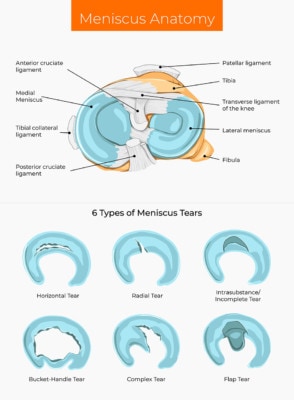Removing the Knee Meniscus Destabilizes the Knee Despite ACL Replacement

M_denis/Shutterstock
Does removing the knee meniscus have implications other than removing an important cushion? The meniscus is a spacer that helps protect the cartilage in the knee and also helps guide the upper knee bone (femur) on the tibia (lower knee bone). Many of today’s arthroscopic knee surgeries remove parts or most of the meniscus. The ACL ligament is a major stabilizer of the knee which helps to prevent extra motion between the femur and tibia. When ligaments like the ACL get stretched, the knee can become unstable. Since this means that the knee bones will move around too much, this instability can lead to more knee arthritis. When the knee ACL ligament is repaired to help stabilize the knee, surgeons will often remove parts of or all of the broken or torn meniscus. Is removing the meniscus a good idea when replacing the knee ACL? A recent study tried to answer this question and looked at what happened when surgeons removed the meniscus and repaired a broken ACL ligament at the same time. In this case, the outside of the knee was still unstable (pivot-shift test) even though the ACL was repaired. This was an unexpected finding as it’s assumed that the knee will become stable again once the damaged ACL is repaired. As discussed, since knee instability has been associated with arthritis, this begs the question of whether removing meniscus tissue is a good idea when repairing the ACL and how this impacts knee meniscus surgery recovery. The study also suggests that the meniscus itself can act as a stabilizer, preventing abnormal motion by properly guiding the knee joint. From other studies we now know that removing only parts of the meniscus may cause more knee arthritis. The upshot? The research seems to be saying that we shouldn’t yank out all of or even pieces of this very important meniscus tissue. Instead, the research says we should do everything in our power to preserve the knee meniscus.

If you have questions or comments about this blog post, please email us at [email protected]
NOTE: This blog post provides general information to help the reader better understand regenerative medicine, musculoskeletal health, and related subjects. All content provided in this blog, website, or any linked materials, including text, graphics, images, patient profiles, outcomes, and information, are not intended and should not be considered or used as a substitute for medical advice, diagnosis, or treatment. Please always consult with a professional and certified healthcare provider to discuss if a treatment is right for you.